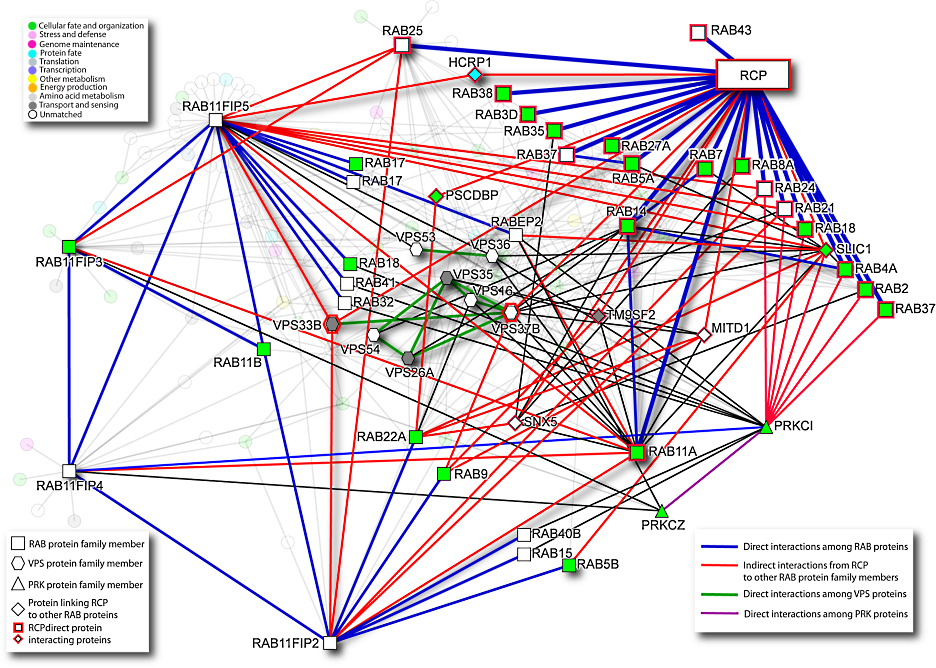
Mills G. B., Jurisica I., Yarden Y., Norman J. C. Genomic amplicons target vesicle recycling in breast cancer. J Clin Invest., 119, 2123-7, 2009.
RCP protein-protein interaction network. RAB11FIP family members function by binding to multiple different RAB proteins to coordinate vesicle function and polarity. In order to effectively target the functions of RCP, it will be necessary to understand how the interaction of RCP with its partners regulates cellular functions. Using Iterologous Interaction Database v1.71 (http://ophid. utoronto.ca/i2d), we constructed a protein-protein interaction network highlighting RCP interactions with other RAB and VPS (vacuolar protein sorting) family members. The network comprises 159 proteins and 447 physical protein interactions. Only direct, physical interactions were included, covering human curated, high-throughput, and interologous interactions (individual interaction sources are listed at http://ophid.utoronto.ca/ophidv2.201/statistics.jsp). Protein function according to Gene Ontology (http://www.geneontology.org/), vesicle function, and polarity are highlighted according to the legends. Red-highlighted nodes represent direct physical interactions with RCP. RAB protein family members are shown as rectangles; blue edges correspond to direct interactions among RAB proteins. VPS protein family members are indicated by hexagons; green edges correspond to direct interactions among VPS proteins. PRK family proteins are triangle nodes; purple edges show direct interactions among PRK proteins. Black edges identify interactions that connect RAB, VPS, and PRK family proteins. Network visualization was done in NAViGaTOR, version 2.1.15 (http://ophid.utoronto.ca/navigator).